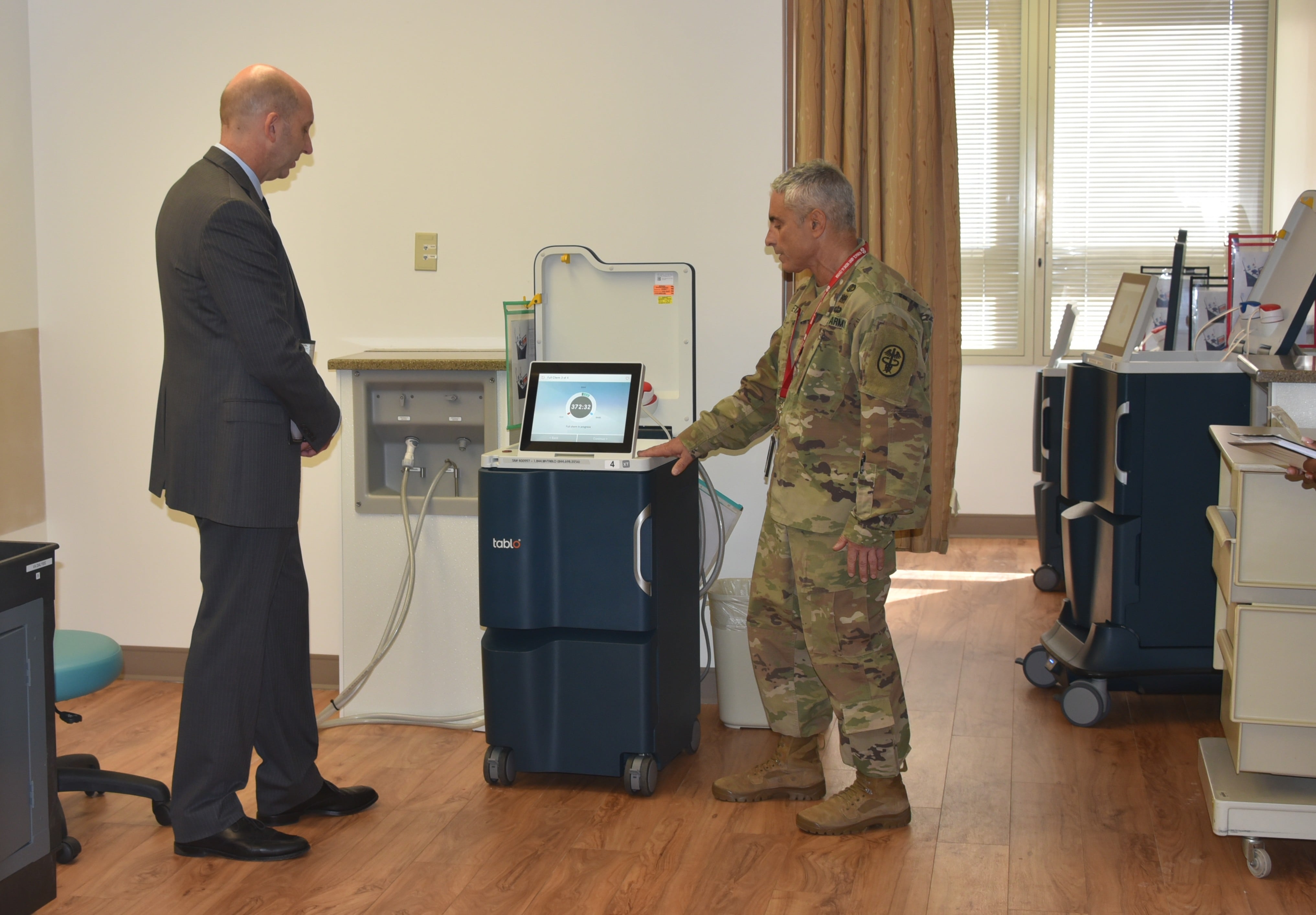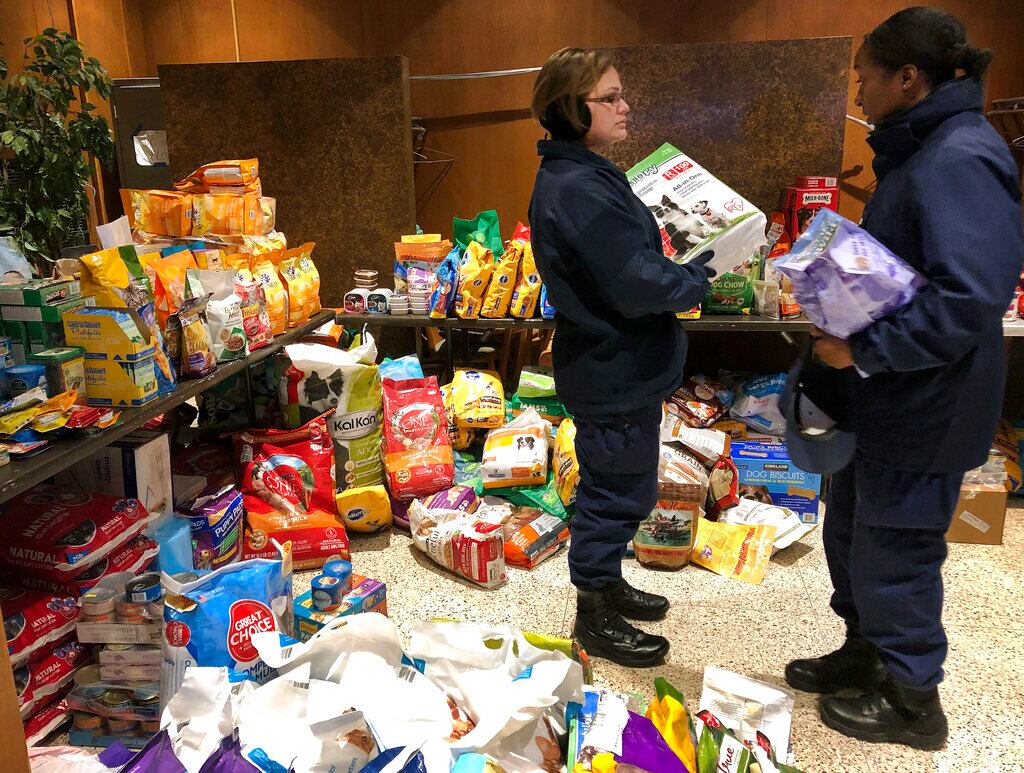A nerve-jangling noise shattered the silence inside the submarine.
It did not sound like the Klaxon diving alarm. And it did not sound like the collision siren.
It sounded like, well, the crew called it “Hell’s Bells.”
Each time the ship’s experimental sonar picked up a deadly mine in the water, it resounded, sending a chill through every crewman on board the Skate as it and eight other American submarines attempted an underwater penetration of the heavily mined waters of Tsushima Strait leading to the Sea of Japan.
Theirs was a mission rooted in vengeance.
Two years earlier, in October 1943, the Wahoo had been patrolling in the Sea of Japan when enemy forces attacked and sank it with all hands, including its commander, the legendary Dudley W. “Mush” Morton.
The loss devastated Vice Adm. Charles A. Lockwood, commander of the U.S. Pacific Fleet’s Submarine Force.
“This is the worst blow we’ve had,” he wrote in his diary. “I’m heartbroken. God punish the Japanese!”
To Lockwood, Morton represented his ideal of the undersea warrior: “He had a veritable lust for combat and he was the deadliest kind of fighter — the cold kind.”
Lockwood “resolved there would come a day — a day of visitation — an hour of revenge.”
Now, almost two years after the Wahoo was lost, that day had arrived. The mission of the American wolf pack, a band of nine submarines dubbed the Hellcats, was to penetrate submerged minefields in the Sea of Japan, surprise the enemy, and devastate their shipping.
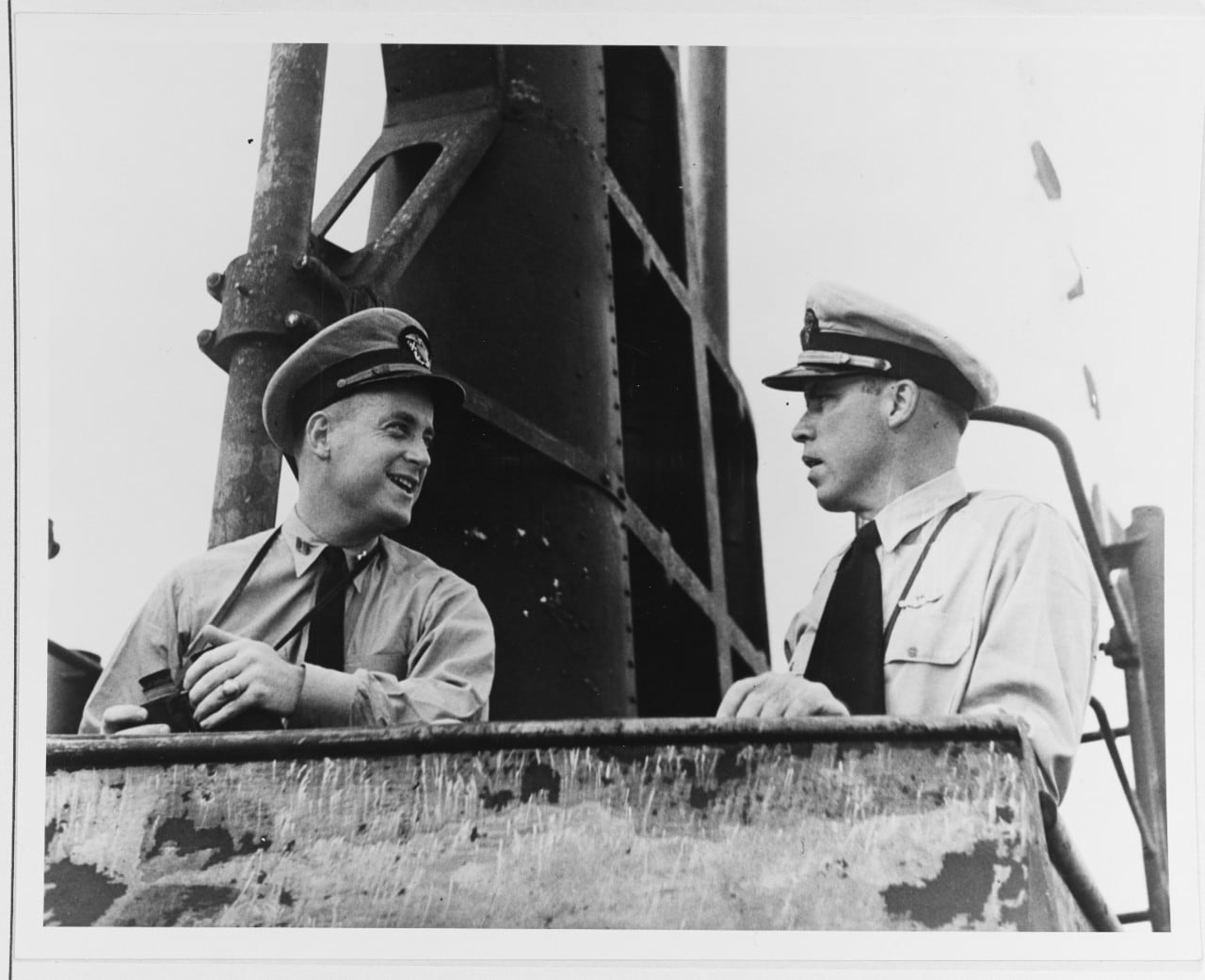
The legend of the Wahoo began in January 1943, when Morton assumed command of the submarine for its third war patrol.
He proved himself an aggressive skipper by sailing into New Guinea’s Wewak Harbor and going after a Japanese destroyer. After his first five bow torpedoes missed, the enemy spotted him, turned, and charged straight at the Wahoo. Morton coolly waited until the destroyer was within 800 yards and fired a torpedo down the destroyer’s throat.
“Broke his back,” Morton noted in his patrol report. “The explosion was terrific.”
The Wahoo sank another four ships before heading back to Pearl Harbor.
On its next two patrols, the Wahoo sank nine more large merchant ships and damaged two, including a 15,000-ton seaplane tender. But its subsequent two patrols — both into the Sea of Japan — were failures.
During the first, the submarine fired nine torpedoes without sinking or even damaging a single target. Morton angrily reported that the torpedoes were defective. After returning to Pearl, the Wahoo was given a load of new torpedoes and, on Sept. 9, 1943, set sail for the Sea of Japan through its northernmost gateway, La Pérouse Strait.
Morton sank four ships during the first week of October.
Then something went wrong. At 9:20 a.m. on Oct. 11, Japanese anti-submarine forces, alert to the presence of a sub in the northern reaches of the Sea of Japan, spotted an oil slick floating in the strait.
Concluding a damaged submarine was attempting to escape into open waters, the Japanese sent six aircraft and five ships to the site and, over the next eight hours, pounded it with 69 depth charges and 40 aerial bombs.
By late afternoon the Japanese forces returned to base, satisfied they had destroyed an American submarine.
They had. The Wahoo and its crew and commander were a grave loss to the U.S. Navy. In just nine months, Morton had sunk 19 enemy vessels; a spectacular record that made him an icon among American submariners.
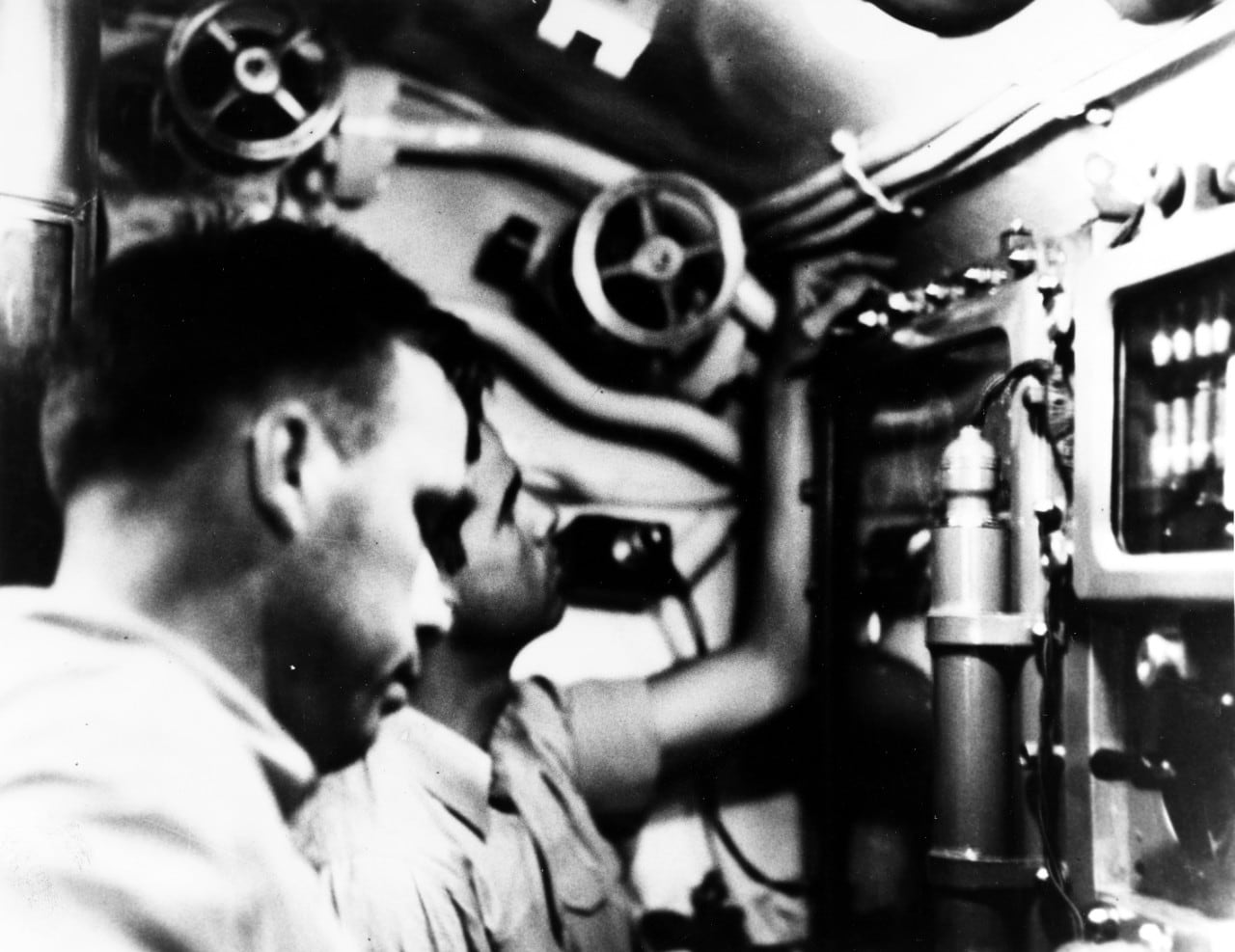
A career naval officer, Vice Adm. Lockwood had assumed command of the Pacific Submarine Force in February 1943, and began exploring technological opportunities to refine the navy’s tactical submarine doctrine.
A veteran submariner himself, Lockwood visited the San Diego labs of the University of California Division of War Research (UCDWR) that April and pleaded for the development of devices to help his boats survive the enemy’s increasingly deadly anti-submarine attacks.
One such gadget, simply dubbed the “small object detector,” was a crude prototype of a frequency-modulated (FM) sonar.
FM sonar worked on the same basic principal as standard active sonar. It transmitted a signal that, upon striking a solid object, returned as an echo to the sending unit.
But instead of emitting an audible “ping,” FM sonar’s stream of signals was silent and, as the UCDWR scientists soon discovered, could locate objects below the surface — things like rocky outcrops, submarine nets, and submerged buoys.
The results appeared as bright, pear-shaped images on an indicator screen accompanied by clear, ringing tones — the “Hell’s Bells.”
The sounds helped a trained sonar operator distinguish shoals of fish from actual mines; the former produced a “muddy” audio tone, while the latter rang out sharp and clear.
FM sonar’s ability to locate submerged objects impressed Lockwood, but he and the lab staff were unsure how exactly the experimental box could be used on board submarines.
The lab continued refining the technology, discovering the device could even track whales swimming underwater. And in September 1943 when the scientists met again with Lockwood, they raised the possibility of using FM sonar to detect mines.
Lockwood realized the device could enable his vessels to navigate the heavily mined waters off the Japanese home islands.
Then, just one month later, the Wahoo was lost. Believing it may have struck a Japanese mine, Lockwood reluctantly decided not to risk any more subs in the Sea of Japan.
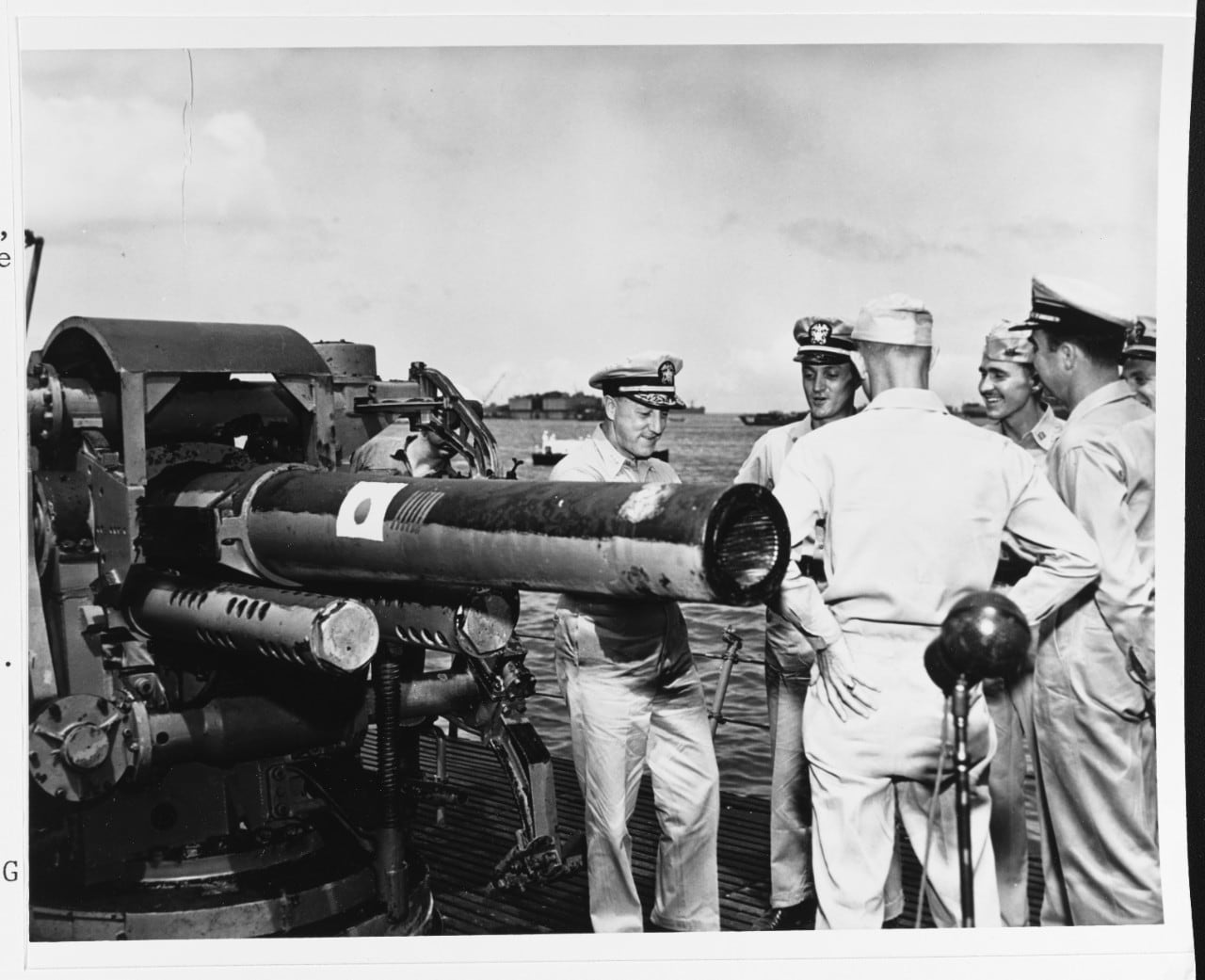
By the late summer of 1944, the Navy completed trials testing FM sonar’s ability to detect underwater obstacles.
Faulty wiring had doomed the device’s first tests.
“It sounded like a ‘chamber of horrors,’” recalled sonarman Neal Pike of the Spadefish. “It howled something awful.”
The crew repaired the wiring and things started looking up; subsequent trials showed significant improvement in FM sonar’s detection ability.
Lockwood felt a “tidal wave of triumph” at the successes.
As he later recalled, “I had gambled much—even the blue chips of my professional standing — on the ability of the FM to pick the lock and open the doors that kept our submarines out of heavily mined waters.”
With a growing force of mine-detecting submarines, Lockwood decided it was time to push the top brass for a very special deployment — something his colleagues referred to as Lockwood’s “pet project.”
On Dec. 3, 1944, Lockwood sent a memo titled “Japan Sea — Patrol of” to Adm. Ernest J. King, commander in chief of the U.S. Navy.
In it, Lockwood argued that there were plenty of shipping targets in the Sea of Japan and that advancements in FM sonar made it possible to get through its southernmost entrance — the 40-mile-wide but mine-strewn Tsushima Strait — with minimal risk.
A swift current running through the strait and continuing directly north through La Pérouse Strait further tipped things in their favor.
By the end of the month, King approved the plan.
Despite FM sonar’s improvements, Lockwood knew the devices were still not consistently reliable.
Therefore, neither the UCDWR labs nor Pacific Fleet Command was willing to fully approve the technology for operational use: “It is not felt that, in its present state of development, FM sonar is operationally reliable,” a February 1945 evaluation report read.
A gloomy Lockwood pressed on. He went out with the FM sonar-equipped boats on training exercises, often operating the gear himself.
And he twice asked Adm. Chester W. Nimitz, commander in chief, Pacific Fleet, if he could go on a war patrol on board an FM sonar-equipped submarine.
Nimitz denied Lockwood’s requests.
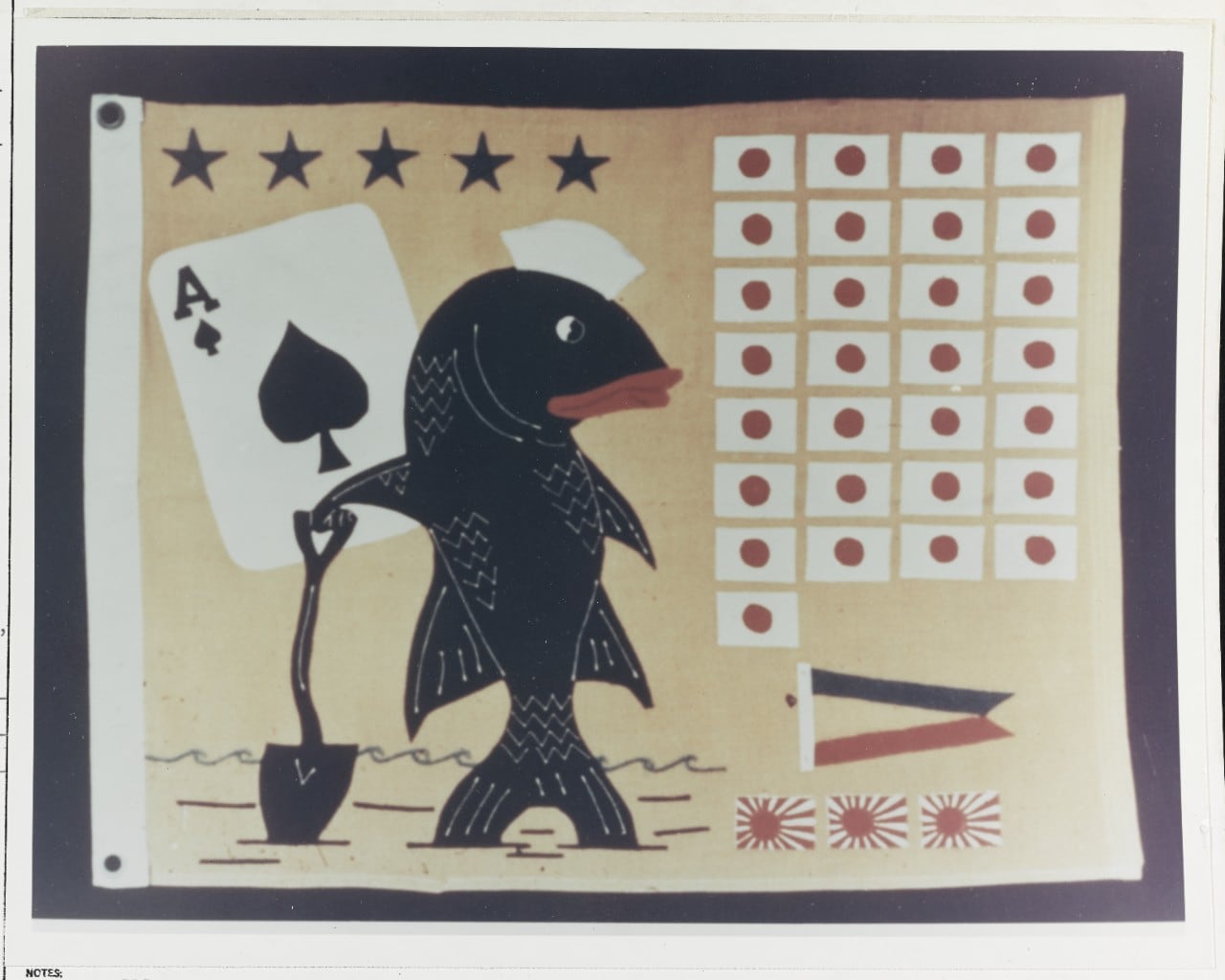
By spring 1945, however, things began to look up for Lockwood. More submarines — Flying Fish, Skate, Bonefish, Crevalle, and Sea Dog — received FM sonar sets. Testing continued to move apace, and some subs even detected and plotted the minefields around the entrance to Tsushima Strait.
They returned with valuable intelligence, including news that the Japanese had four lines of underwater mines in the strait, strung northwest to southeast.
In April, Lockwood chose Cmdr. William “Barney” Sieglaff — a veteran of seven war patrols, with a record of 15 ships sunk — to take over training, planning, and execution of the mission, dubbed “Operation Barney.”
Sieglaff assembled nine FM sonar-equipped submarines into a wolf pack called the Hellcats, divided into three similarly named trios: the Hepcats, the Polecats, and the Bobcats. Sieglaff placed Sea Dog’s Capt. Earl Hydeman in overall command.
HEPCATS
Sea Dog
Crevasse
Spadefish
POLECATS
Tunny
Skate
Bonefish
BOBCATS
Flying Fish
Bowfin
Tinosa
By mid-May they were ready; FM sonar was still imperfect, but Lockwood and the submariners felt confident enough to proceed with the operation.
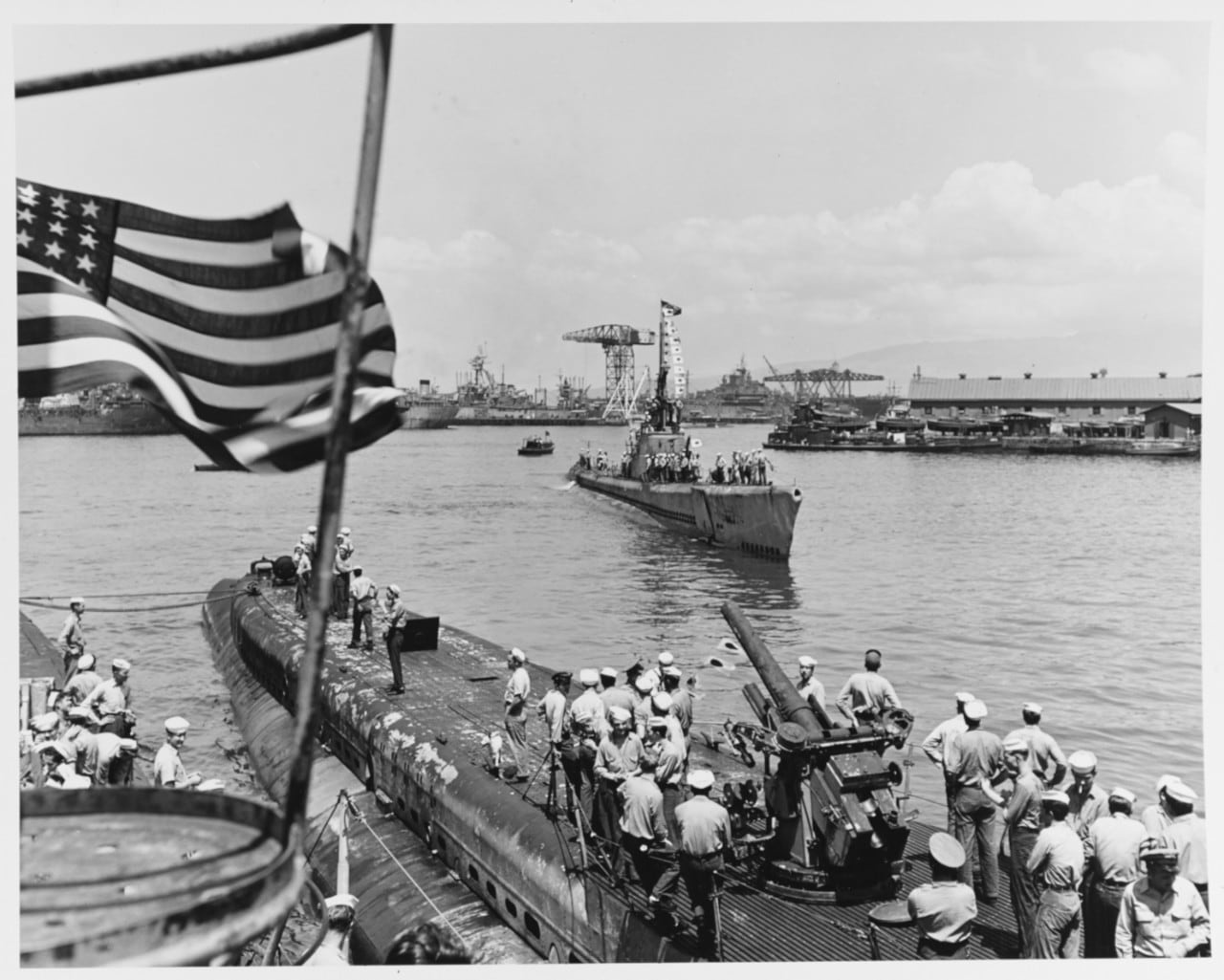
On May 27, 1945, the Hepcats steamed out of Guam’s Apra Harbor and set course for the Japanese home islands.
The Polecats departed the next day, and the Bobcats sailed on May 29.
All of the Hellcats had uneventful Pacific crossings, except the Bobcats’ Tinosa.
Around midday on June 1, Lockwood ordered Tinosa, which was 600 miles off the Japanese coast, to divert course and search for the crew of a downed B-29 bomber, the Skyscraper I.
The next day, Tinosa found and picked up the 10 airmen. But when the aircrew learned that Tinosa was headed to the Sea of Japan, they asked to be returned to their lifeboat, preferring the open ocean to a mission to Japanese waters.
Fortunately for them, reprieve came in the form of a homeward-bound submarine.
Just after midnight on June 4, 1945, the Hepcats became the first of the Hellcats to reach the entrance of Tsushima Strait.
Sea Dog, as flagship, took the lead. But when it reached the first line of mines, Sea Dog’s FM sonar glitched: it picked up only vague “blobs” and its Hell’s Bells sounded mushy when they should have rung true and clear.
Nevertheless, Sea Dog plowed ahead, and by some miracle the submarine evaded all four lines of mines.
The other two subs followed and, after 20 tense hours underwater, the three Hepcats rendezvoused on the surface before setting out for their assigned stations off northern Honshu.
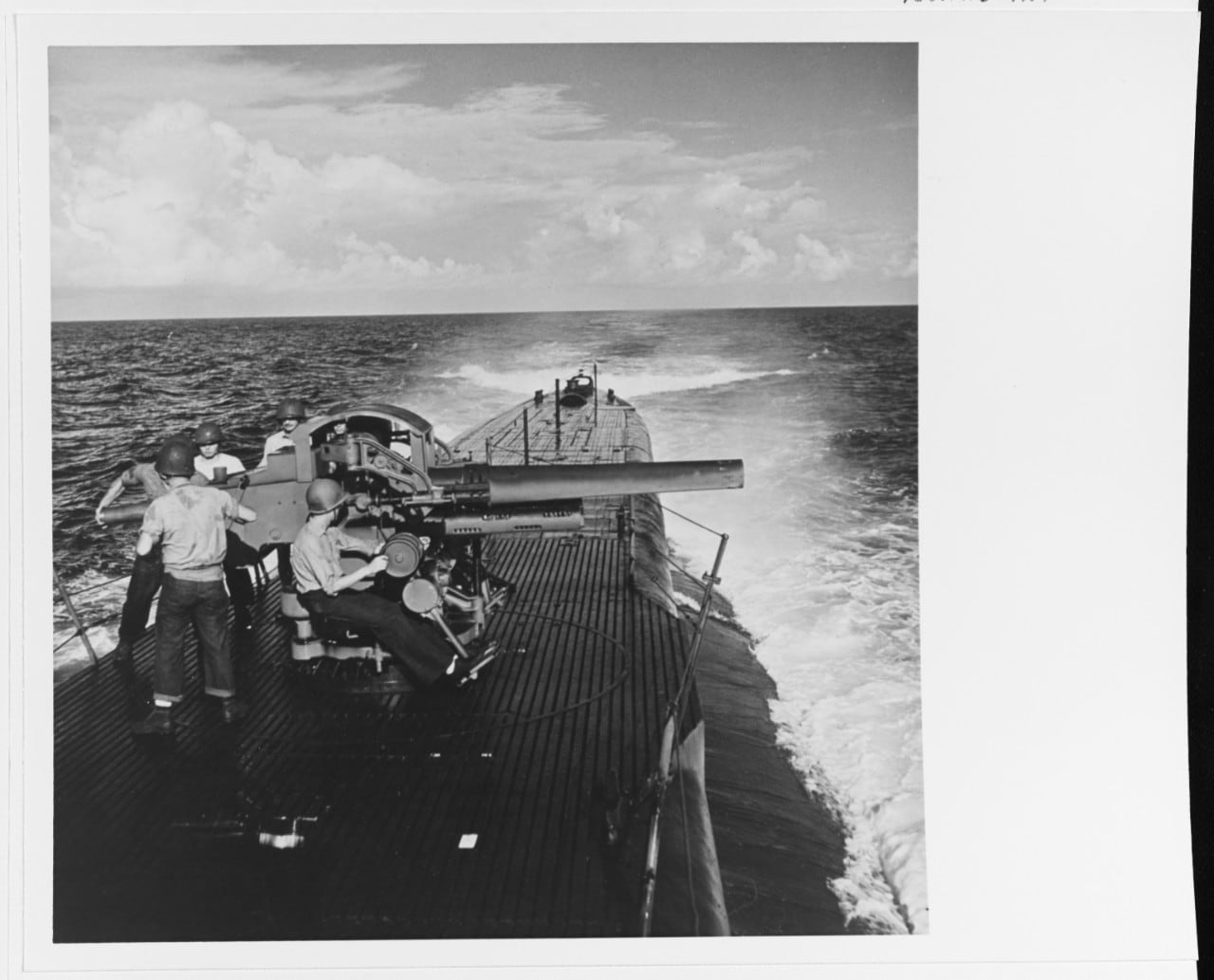
The Polecats passed through Tsushima Strait the following night.
Within an hour of submerging, Skate reached the first line of mines without any problem. But in the second line, the mines were spaced only 50 yards apart — just half the length of the submarine.
As the boat threaded the needle, Skate came upon one very close cluster of mines. With the current pushing them toward the deadly spheres, there was no time to maneuver.
Suddenly the crew heard an unnerving noise outside the hull. It was the rasping of metal on metal, a sound that could only mean one thing: the submarine was scraping along a mine cable. If the steel cable snagged in the sub’s bow planes or superstructure, the mine would be yanked down the cable to the ship, marking the explosive end of Skate.
“This is it,” one sailor said. “This is it.”
Albert Olufsen, Skate’s hydrophone operator, turned up the volume so his comrades could hear better.
“They all turned white,” Olufsen recalled.
For a full agonizing minute, the crew listened with bated breath as the submarine continued to scrape against the cable.
Then they were through.
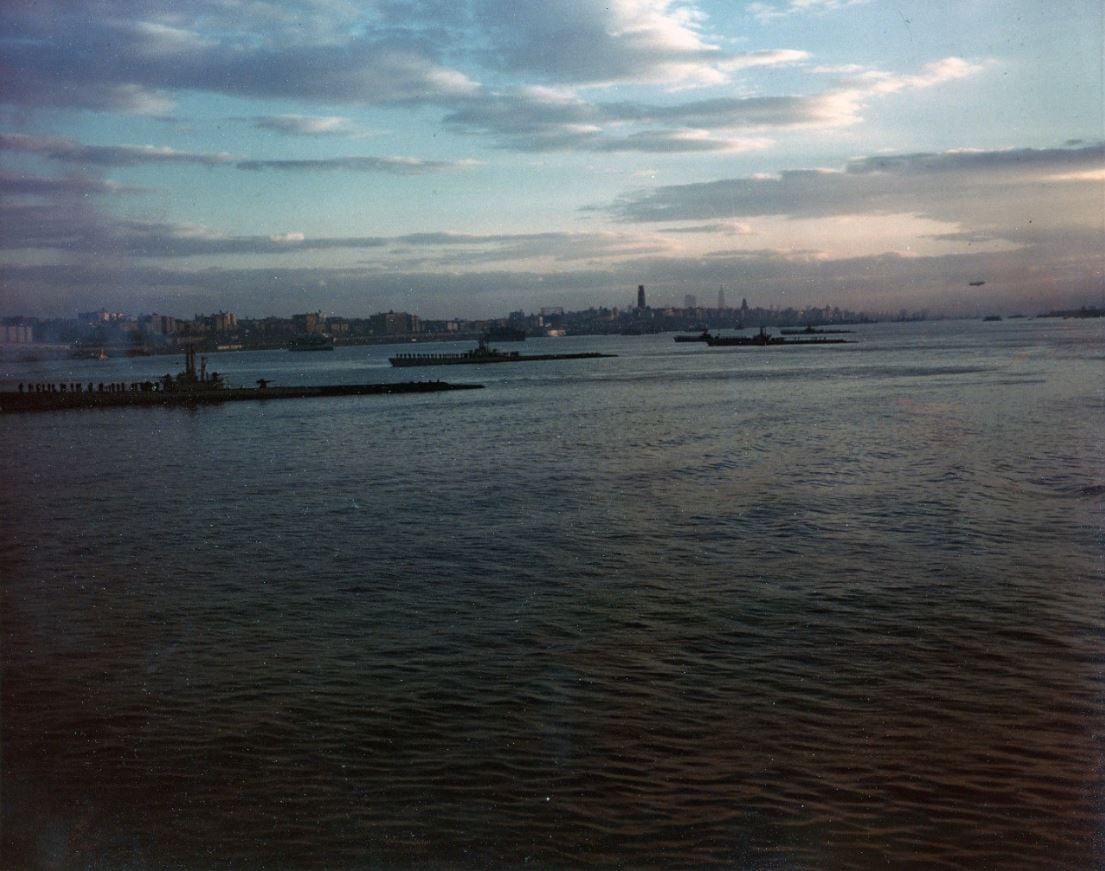
On June 6, it was the Bobcats’ turn.
This time, Tinosa rubbed a mine cable.
It was an “eerie sound,” torpedoman Benny Bentham later wrote in his dairy.
Motor Machinist’s Mate Don Pierson recalled that the tension aboard Tinosa was so high during the transit, “if you dropped a penny on the deck, people would be on the ceiling.”
But they, too, got through.
Once all nine submarines made it through the strait, they reformed and set off on the hunt, eager to avenge the Wahoo.
Over the next 17 days, the Hellcats ran amok in the Sea of Japan, sinking everything in sight.
Tinosa got in the first licks on June 9 when it mortally damaged a Japanese freighter. To the north, Crevalle sank another freighter, while Sea Dog destroyed a merchant ship and a large tanker.
To the exhilarated Lt. James P. Lynch, Sea Dog’s executive officer, “it was like shooting fish in a barrel.”
Despite the plentiful targets, several Hellcat crews experienced close calls during the mission.
While targeting four vessels anchored in a cove, Skate narrowly avoided running aground and crashing in the uneven depths.
Nonetheless, it fired all six of its bow torpedoes and hit all four ships.
A few days later Sea Dog temporarily ran aground, while a Japanese plane circled overhead.
Fortunately for Sea Dog, the sub went undetected.
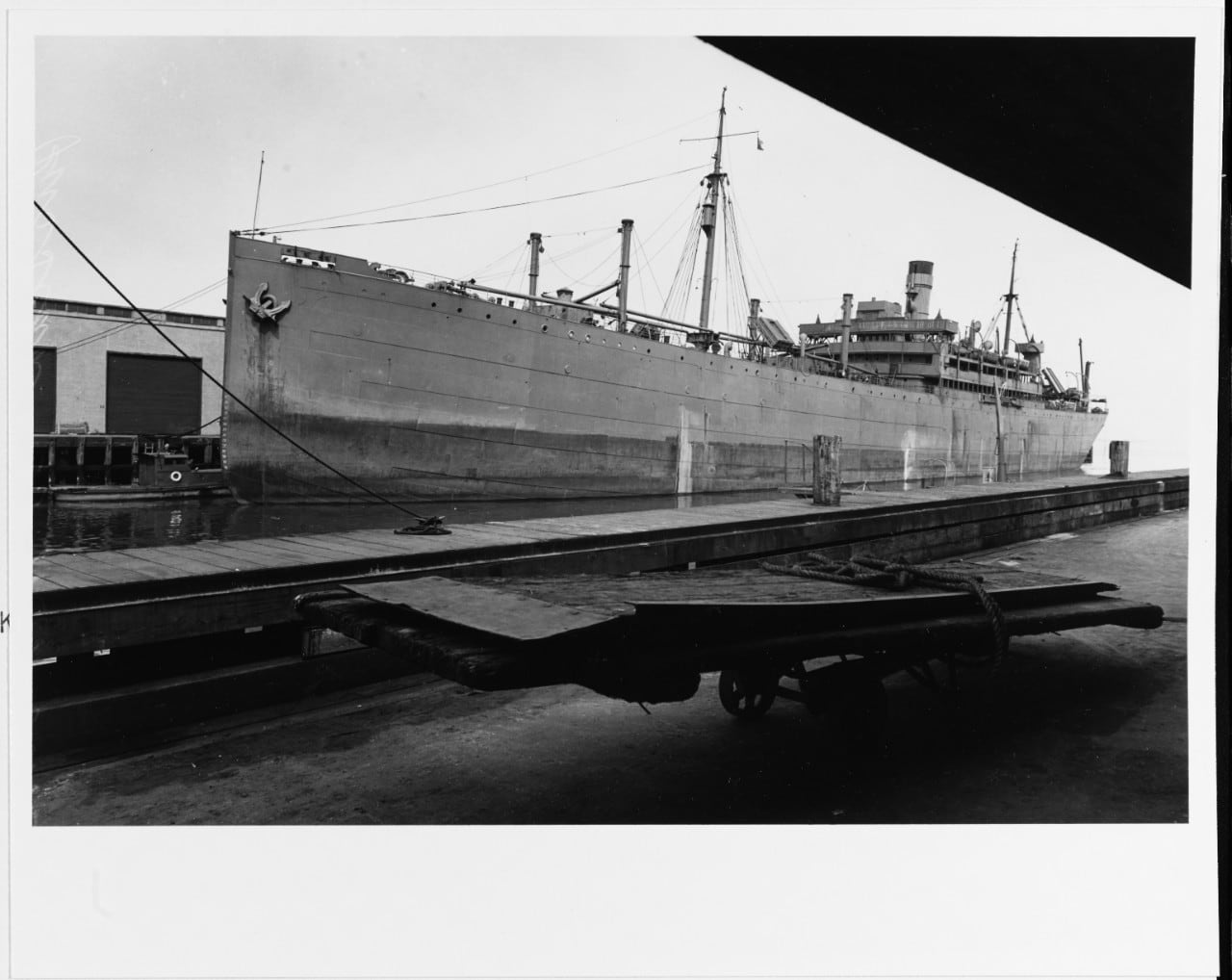
Early on June 13, Spadefish misidentified and sank a blacked-out ship that turned out to be a Russian maritime freighter, the Transbalt.
The Soviet Union — then neutral in the war against Japan — angrily condemned the sinking.
Not wanting to admit its submarines were operating in the Sea of Japan, the U.S. Navy blamed the Transbalt’s sinking on a Japanese submarine.
Skate’s crew had a sobering experience when they sank a Japanese submarine, the I-122.
While the enemy submarine was quite a bag, the American crew felt a subdued sense of empathy for I-122’s submariners.
“There was a sudden realization that the sinking sub might have been Skate,” communications officer Bill Burlin later recalled.
Hydrophone operator Albert Olufsen added: “There but for the grace of God go I.”
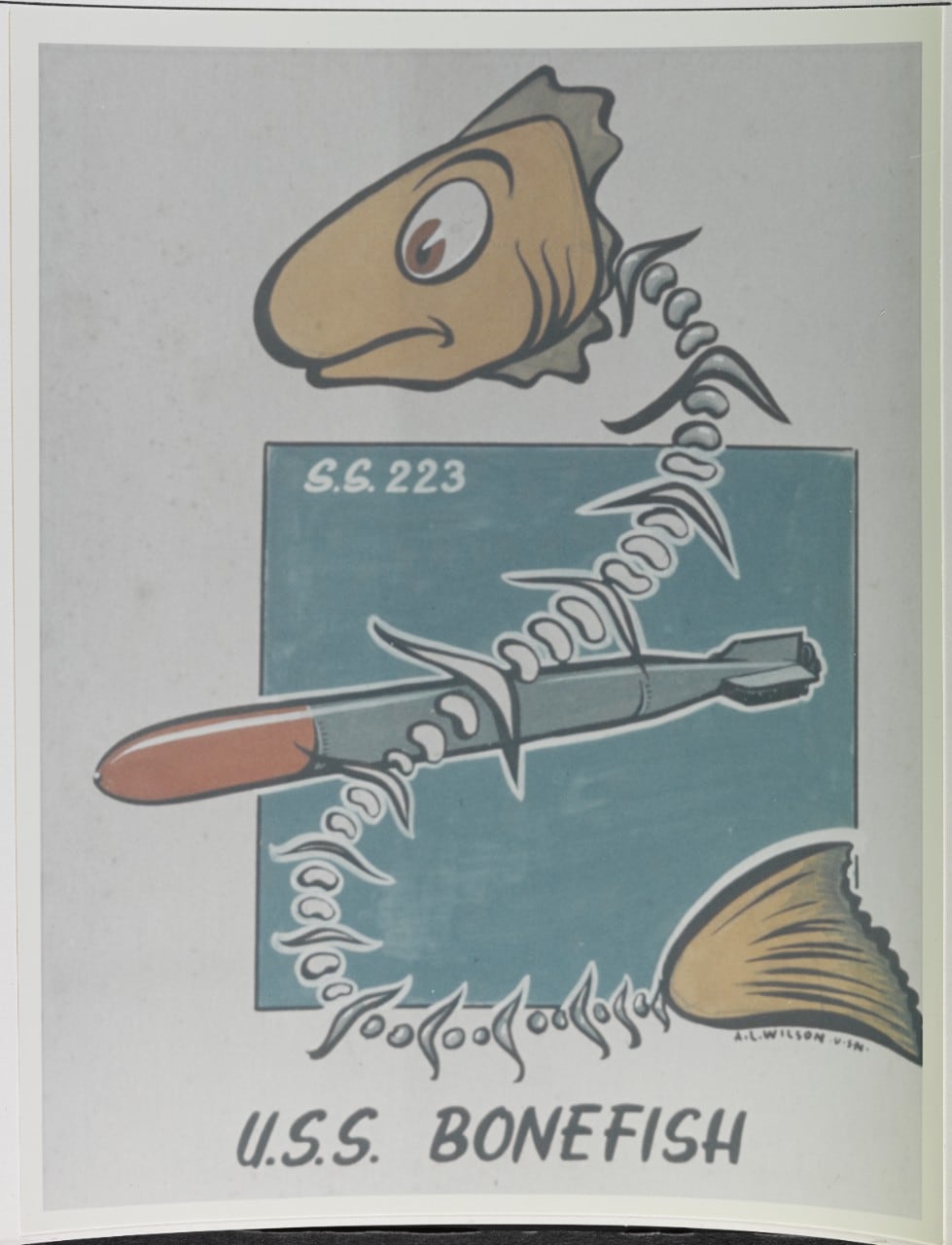
At the end of June, it was time to go home.
Sea Dog’s Capt. Hydeman decided on a high-speed surface escape to spare the weary crews another submerged transit through the minefields.
But when the submarines rendezvoused outside La Pérouse Strait, Bonefish was not among them.
Only after the submariners returned to Pearl Harbor did they learn that Japanese anti-submarine forces had attacked and sunk their packmate on June 19.
Just after sunset on June 24, Sea Dog was leading the pack of eight submarines eastward at 21 knots when its surface search radar quit.
Crevalle took the lead, sneaking the pack past several Japanese ships. As they raced through the strait, the Hellcats unknowingly passed within a few miles of Wahoo’s underwater grave. By early the next morning the Americans were clear of La Pérouse Strait and headed for home.
On July 4, the first group of Hellcats returned to Pearl Harbor to a rousing welcome. Lockwood went aboard each boat to congratulate its skipper and crew.
After the celebrations, he went straight back to preparing more submarines for future missions into the Sea of Japan.
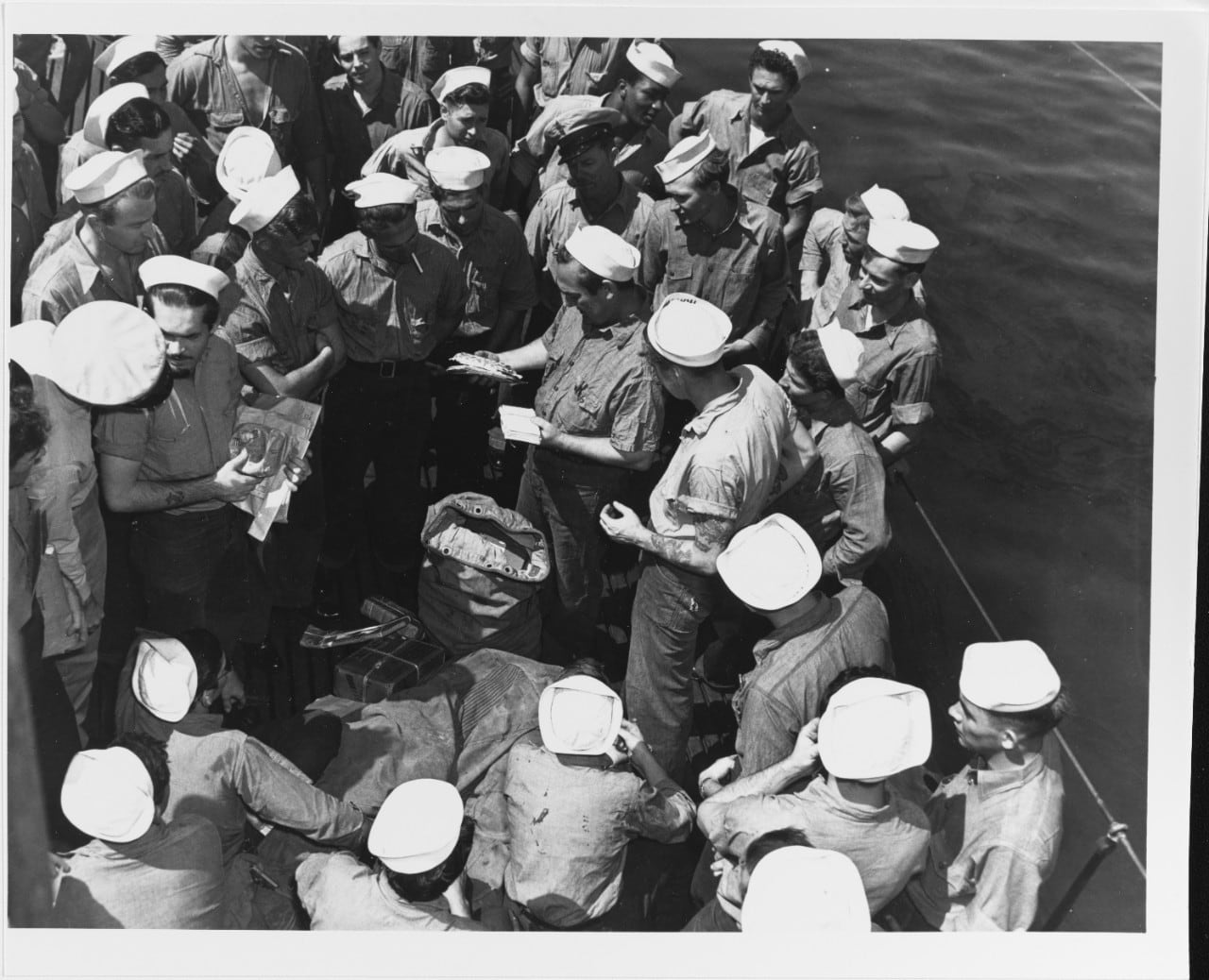
As far as Lockwood was concerned, Operation Barney had been a noteworthy success. Despite technical problems, most FM sonars had performed admirably. The new technology, combined with detailed planning, crackerjack submarine crews, and dependable subs, had helped the nine Hellcats sink 28 Japanese ships, including a submarine and a destroyer.
“I felt that the dauntless spirit of the Hellcats and of Dudley Morton’s Wahoo was with me when I reported their success to Admiral Nimitz,” Lockwood wrote in his 1955 book about the operation, Hellcats of the Sea.
“Now I could say in sadness and in pride, ‘Go with God, Wahoo!’”
Lockwood’s sentiments were heartfelt but the Hellcats’ mission of vengeance had come at a high price — the loss of 85 submariners on Bonefish and the Russian sailors lost on the Transbalt.
Was avenging Wahoo worth it?
Lockwood certainly believed it was. Sensitive to postwar criticism that there had been no lasting strategic value to the mission, the admiral forcefully defended his decision.
“As one who spent almost two years preparing for it and who now looks back on it from almost ten years,” he wrote, “I feel even more strongly that in those breathless days of 1945 that it was necessary — vitally necessary.”
In his 2010 book, Hellcats: The Epic Story Of World War II’s Most Daring Submarine Raid, author Peter Sasgen differed with Lockwood’s assessment.
By the summer of 1945, the U.S. Navy had already destroyed much of the Japanese merchant fleet; sinking the vessels that remained near the Japanese islands would have required many subsequent missions like Operation Barney.
On top of that, a mere month after the Hellcats returned to Pearl Harbor, the United States dropped atomic bombs on Hiroshima and Nagasaki. The war ended weeks later.
“I believe it’s fair to say that despite the bravery and dedication of the Hellcat submariners, Operation Barney was simply not worth the risks it entailed to sink ships in the Sea of Japan and avenge Morton and the Wahoo,” Sasgen wrote.
“Certainly it was not worth the loss of the Bonefish.”
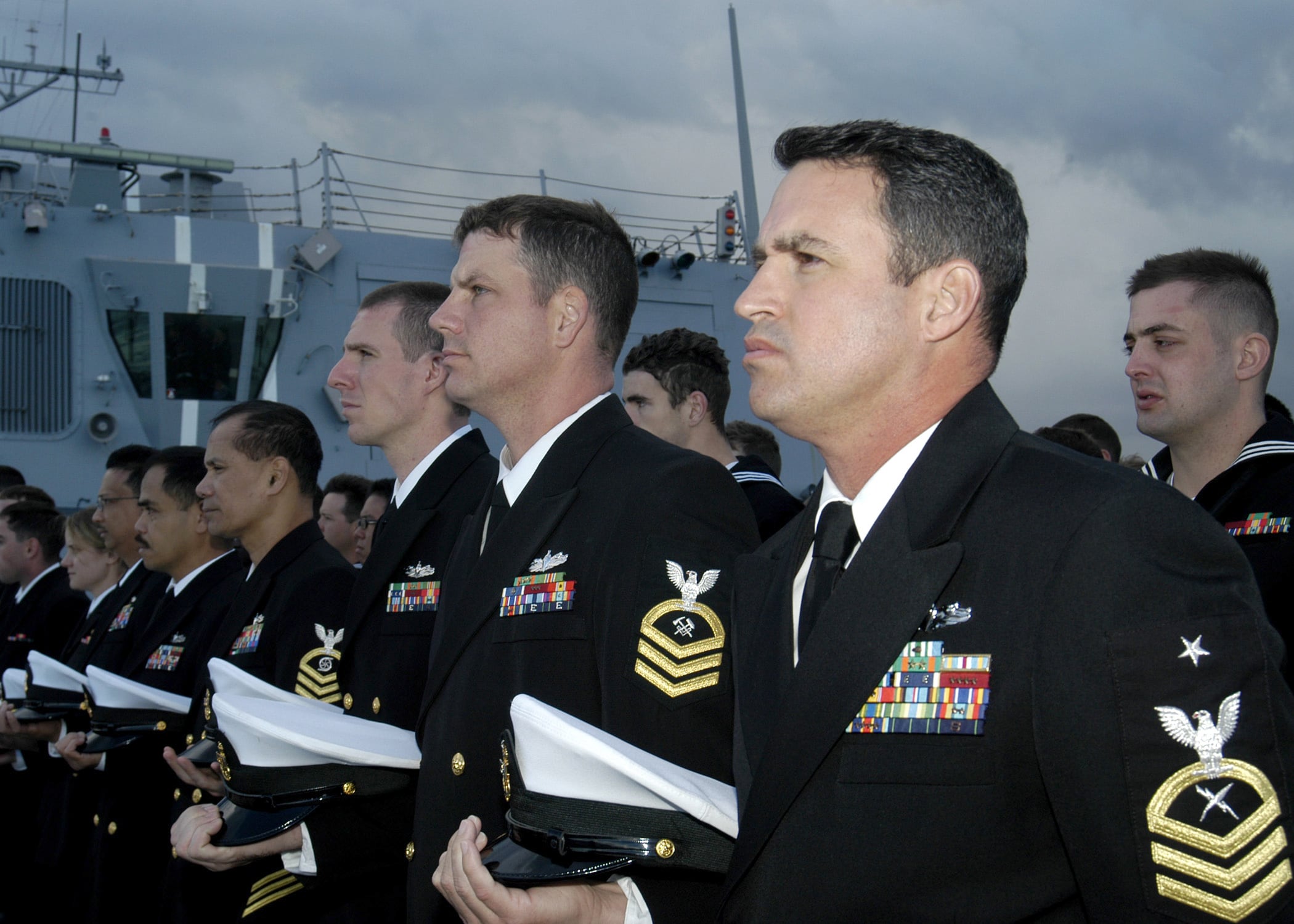
The mission did have one undisputed plus, as a proving ground for FM sonar.
What began in 1942 as an apparatus of unknown potential — a primitive breadboard of wires, tubes, switches, and knobs — has evolved over the decades into a sophisticated electronic search tool.
Today, anti-submarine forces drop sonobuoys with FM transducers to search for hostile boats. Commercial fishermen use FM devices to find shoals of fish. FM-based handheld obstacle recognition systems give mobility to visually impaired persons. Multi-channel side-scanning sonars have revolutionized mapping and object location on the sea floor.
The diversity of these devices would have astonished the man whose obsession made them all possible.
The story that began with Vice Adm. Lockwood came full circle in 2005 when a multinational search effort, utilizing state-of-the-art, side-scanning FM sonar, located a submarine wreck 213 feet below the surface, about 12 miles off the northernmost point of Hokkaido.
It was the Wahoo.
Russian divers said the ill-fated submarine had suffered a direct hit to its conning tower.
The U.S. Navy confirmed the finding and held a wreath laying ceremony at the site in July 2007.
Wahoo rests there now on “eternal patrol.”
RELATED
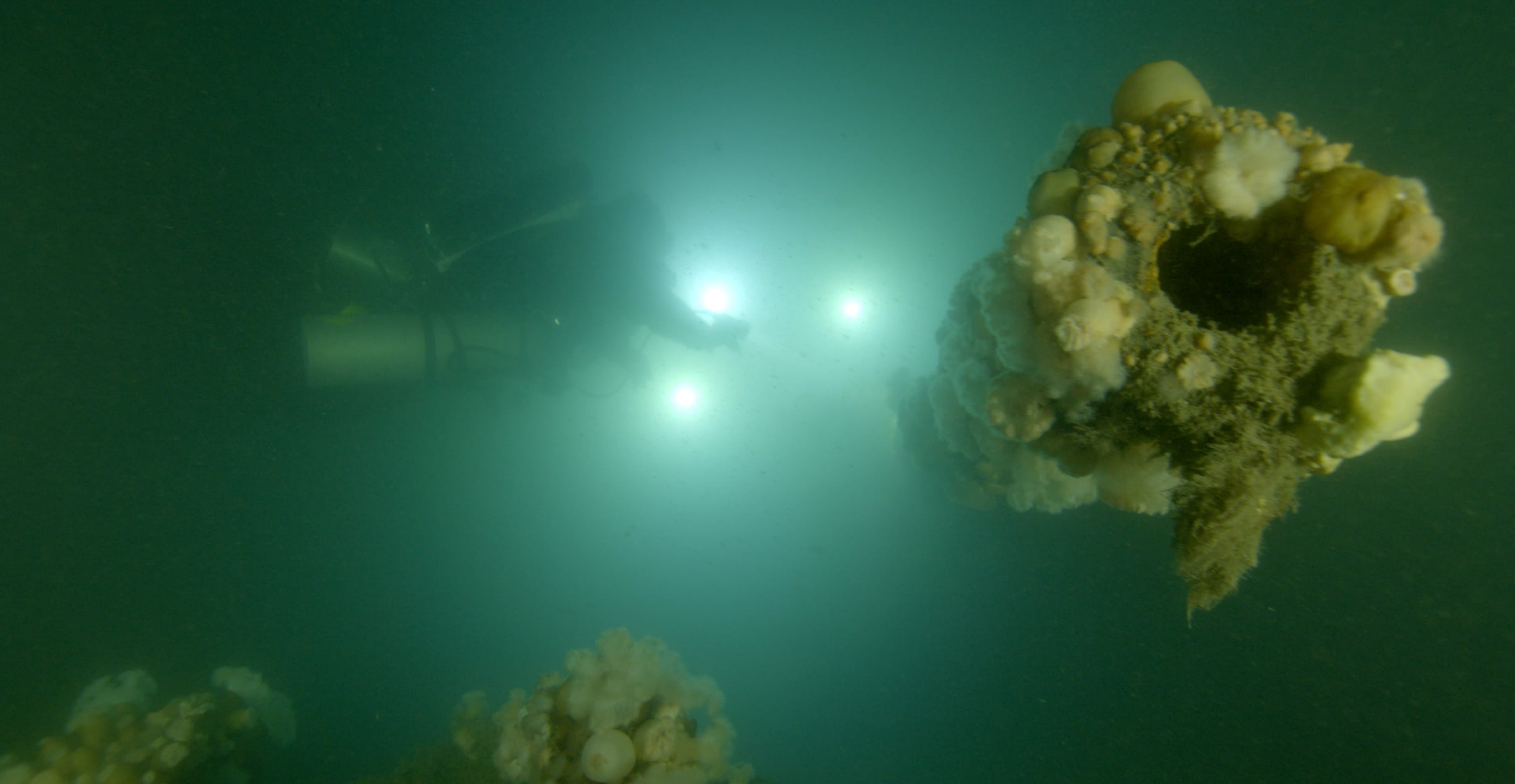
This story was originally published in the November/December 2016 issue of World War II magazine, a sister publication to Navy Times. Subscribe here.




